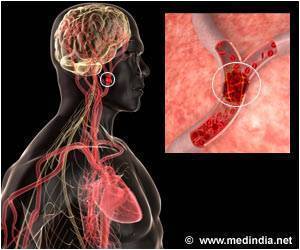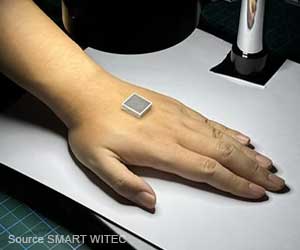Scientists at the Technical University of Madrid have developed a cheap new method of manufacturing optical nanosensors that can cling to curved surfaces.

These nanosensors enable us to measure refractive index variations of the surrounding medium and this can be used to detect chemical substances. Also, they display iridescent colors that can vary according to the viewing and illumination angle. This property facilitates the detection of position variations and surface topography to where they are stuck at a glance.
The creation method for flexible nanosensors consists, firstly, on manufacturing sensors over a compact disc of traditional polycarbonate. Secondly, transferring these sensors to adhesive Scotch tapes by a simple stick-and-peel procedure. This way, the nanosensors go from the CD surface to the adhesive tape (flexible substrate).
Source-Medindia
 MEDINDIA
MEDINDIA


 Email
Email









